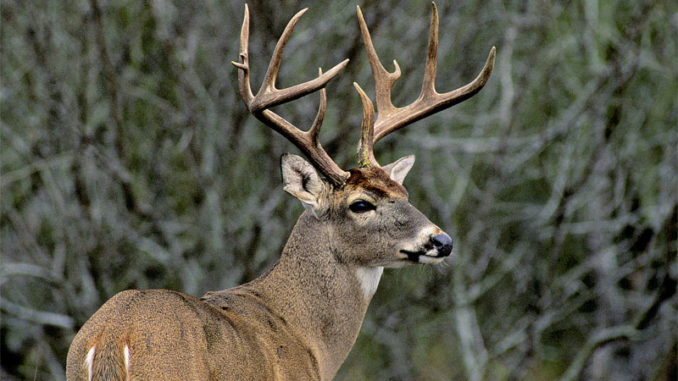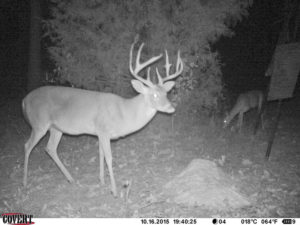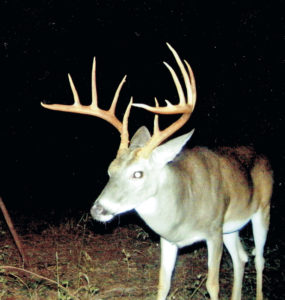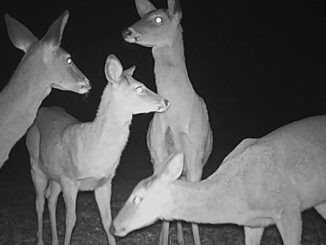
Are habitat, hunter habits keeping high-class bucks from their potential?
I retired from the Lousiana Department of Wildlife and Fisheries in 2007. At that time, I made the statement in an article in this magazine that the state record for a typical whitetail taken by a gun would be broken in 10 years. Now, 13 years later, the Broadway Buck, killed in 1943, is still Louisiana’s state typical record.
Every year, there are a handful, and I mean a handful, of deer that qualify for the Boone & Crockett and Pope & Young club’s record books. Of that number, one or two reach the magical 170 mark for listing in the B&C all-time record book.
When I retired, the deer situation in the state was great, and I just knew that within a few years, a new state-record typical would be killed. I even predicted it would probably come from Avoyelles Parish. Here we are in 2020, and not much has changed on the Big Game Record List for Louisiana.

Look at the book
A look at the 2007 list reveals that the top 10 deer on the list are the same as they were back then. The 1943 Broadway Buck is No. 1, scoring 184 6/8, followed by the 1961 McCoy Buck, scoring 184 4/8. At No. 3 is the 1914 Womble Buck, scoring 184 2/8, and in fourth place is the Riviere Buck, killed in 1998, that scored 181 1/8. If I remember correctly, that buck had three abnormal points that deducted from the final score and kept it out of first place.
The No. 5 deer is a buck killed on Thistlethwaite WMA in 1975 by Shawn Ortego; it scored 180 5/8. If you recall, this WMA was doing so well growing big bucks that a special, big-buck season was established, but it proved unsuccessful.
Top 25
A glance at the top 25 deer on the list of top typicals by gun shows that four deer killed after 2007 have been added. The most recent was the 175 3/8 McPherson Buck killed in Avoyelles Parish in 2019. In 2011, Kevin Breaux killed a 176 5/8 typical buck in St. Mary Parish. In 2015, Donald Forbes killed a 173 1/8 typical in East Baton Rouge Parish, and in 2016, Charlie Lusco killed a 173 3/8 typical in Madison Parish.
All of these are great Louisiana deer, but they fall short of the No. 1 mark, even though many were promoted as a new state record when they were originally killed. Abnormal points and deductions for lack of symmetry are a hunter’s worst nightmare.
I contacted two of the state’s top deer gurus and asked for their thoughts on this subject: Scott Durham, director of the Deer Research and Management Program and Jonathan Bordelon, a biologist who is the deer-project manager. Both agree that nutrition is the key for growing a trophy class buck, and I think all deer biologists would agree.
Changing habitat
Habitat that provides high-quality nutrition is the key, especially during the spring and summer growing season. If protein is lacking in a deer’s diet during the growing season, body growth, antler development and reproduction will suffer. Durham pointed out that much of the habitat in this state has changed, especially in the mixed pine/hardwood forests.
Forests dominated by pine trees do not grow real trophy deer; a 130-class buck is probably the best this habitat can do unless land managers are really supplemental feeding in a big-time way. Pine trees are being grown on sites where once only hardwood timber grew. Farmland with bottomland hardwoods along our major rivers is still the best habitat for trophy deer.

Letting them walk
Bordelon pointed out that many hunters are shooting only adult bucks and allowing the younger ones to get older, but he suggests that many hunters would not pass up a 150- or 160-class buck, so they may not be getting that extra year or two that it takes to be a new No. 1. Durham believes there are a few areas that have the nutrition and age class that could produce a new state record in few years.
Age, of course, is important, but I am seeing that some are carrying this to the extreme and passing up all adult bucks, thinking that they will all get better. This is simply not the case. Only a minute percentage of adult bucks in the wild have what it takes. It just seems that these bucks have the correct genetic make-up to be big, which is why they are so rare. In any population, there are bucks in the low-end category, the average category and the high-end category. I suspect that the low-end and average category bucks will never be 180-class animals and will die of old age or disease if they are not harvested. If a buck is only going to be a 130-class buck, and hunters are looking for a 170-class buck, that buck will never be harvested and will simply be wasted. Hunters need to learn to recognize these mediocre adult bucks and harvest them.
Carrying capacity
Combine a high buck population with a high doe population, and chances are the habitat will never produce a 180-class buck; there are simply too many mouths to feed. I have observed that many baby boomers who were dropping deer right and left in the 1970s and 1980s have dramatically reduced their kill. Many hunters often brag about how many adult bucks they saw but did not shoot. A deer population that is below carrying capacity of the habitat has the best chance of growing a trophy deer, if quality nutrition is available.
Durham is somewhat optimistic that a new state record is around the corner. Bordelon believes it could happen if the stars all line up for a deer to grow up and to become a 180-class and if they line up for a hunter to kill it. I believe that if the stars, moon, sun and all the other galaxies come together in proper fashion, it might happen. Who knows, it could happen to me, but I don’t think so.

